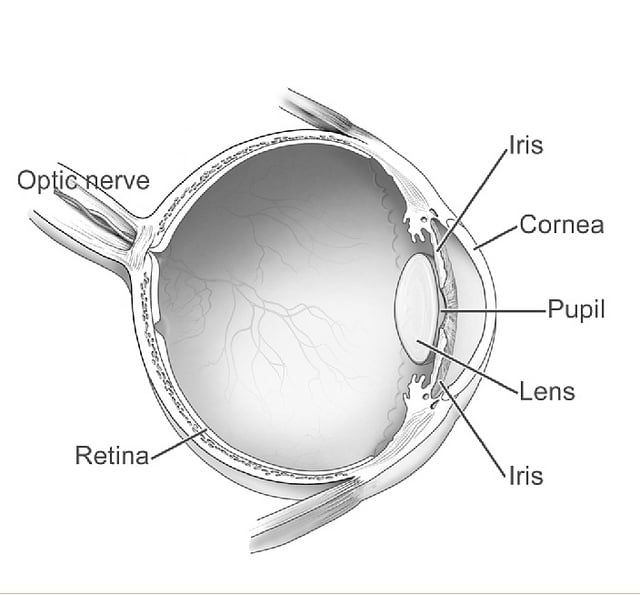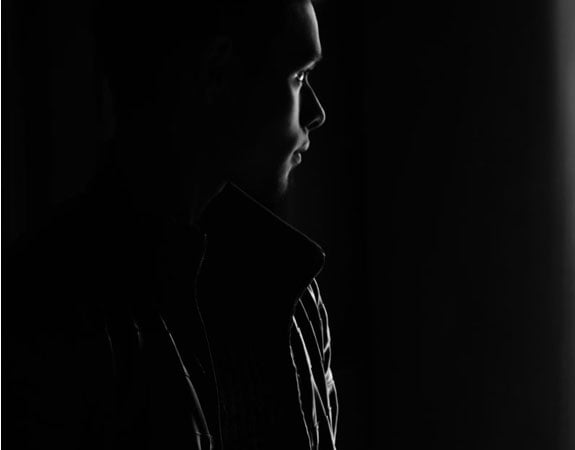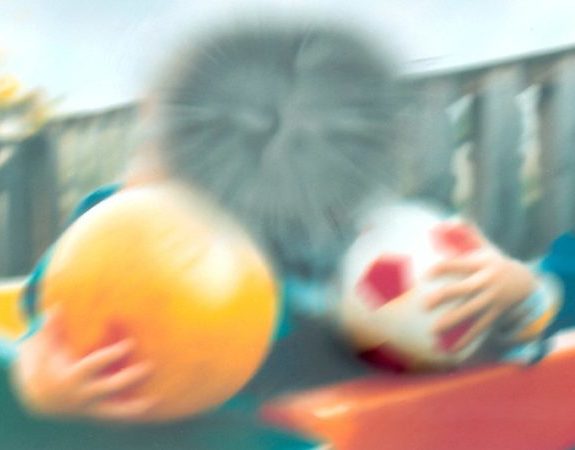Legal Blindness
The term “legal blindness” is a legal phrase, not a medical one. Governments use the term to determine eligibility for benefits, such as disability and job training. Legal blindness is not the same as total blindness, in that people who are legally blind may have some vision and can see things like shapes and colours, while those who are completely blind cannot see at all.

In some places, being legally blind can affect a person’s ability to drive. It can also affect their ability to work, take care of their home, or perform various activities of daily living.
Those who are legally blind may qualify for benefits, such as those offered by the Social Security Administration in the United States, for example. Various government agencies and non-governmental organizations offer benefits and aid to people who are legally blind. These benefits can include low visibility aids and other tools or assets to help improve daily functioning.
Clinically-validated, eSight enhanced vision glasses are used daily by thousands of people with legal blindness. Try eSight today!
Defining Legal Blindness
Because legal blindness is a legal term rather than a medical one, the definition of legal blindness can vary by location. Governments of the United States, Canada, UK, and other places around the world define legal blindness as having 20/200 vision loss in the individual’s best eye with the help of contact lenses or glasses. Having 20/200 vision means the person cannot be more than 20 feet (six meters) away to see what someone with normal vision can see at 200 ft (60 m).
Visual Fields
Some government agencies also consider visual fields in their definition of legal blindness. The visual field is the entire area a person can see in their side, or peripheral vision when he or she looks straight ahead. Eye doctors describe visual fields in terms of degrees, with the normal visual field of each eye spanning more than 120 degrees horizontally and 90 degrees vertically. Someone who has a visual field of 20 degrees or less, even with the help of glasses or contacts, is legally blind. This means the individual has trouble seeing to the left and the right when looking straight ahead.
Remaining Vision
Also known as statutory blindness, legal blindness does not mean someone cannot see anything at all. In fact, many people who are legally blind have some vision, but their field of vision is so narrow or blurry that it makes everyday activities very difficult. Some people who are legally blind have blind spots that cannot be overcome with glasses or contact lenses.
Blind spots, narrowed or blurred vision associated with legal blindness are the results of defects or damage in various eye tissues. The eye is a complex organ, and even the smallest amount of tissue damage can have a significant effect on vision.

eSight electronic eyewear enhances vision for people living with central vision loss, impaired colour vision, blind spots and more. Try eSight today!
About the Eye and Eye Diseases that Cause Legal Blindness
Light rays carry visual information about the world. Light passes through the clear covering of the eye, known as the cornea, and through the pupil. Sitting just behind the pupil, the lens of the eye focuses the ray of light. Next, the light strikes the retina, which is a very thin, light-sensitive layer of tissue lining the back of the eye.

Special photoreceptive cells in the retina, known as rods and cones, absorb the light – rods are capable of vision at low light, while cones are responsible for seeing color and for sharp vision. The retina converts the information carried on the light into electrical impulses. The optic nerve then transmits the impulses to the brain, which converts the electrical signals into the images we perceive.
Other parts of the eye keep the organ healthy and functioning properly. Blood vessels deliver oxygen- and nutrient-rich blood to the retina, for example. Fluid inside the eye, known as intraocular fluid or aqueous humor, provides nutrients to the eye and maintains the eye in a pressurized state. This fluid flows out through the pupil and into the eye’s drainage system to maintain proper pressure within the eye.
Disease can damage these eye tissues in ways that interfere with their function and cause poor vision. Substantial damage done by advanced eye disease can cause legal blindness.
Difference between Low Vision, Legal Blindness, and Total Blindness
The terms “low vision,” “legal blindness,” and “total blindness” may seem similar, but they are actually quite different. Doctors and government agencies define legal blindness as 20/200 vision in the best eye with correction from glasses or contacts, indicating a substantial deficit in vision. They define low vision, on the other hand, as 20/70 in the best eye with correction. While low vision can interfere with daily activities, the vision loss is not quite as profound is it is with legal blindness.
Total blindness is the complete lack of light perception and form perception. In other words, people who are totally blind cannot see any light and cannot make out the form of anything in front of them. Total blindness is rare these days – 85 percent of those with eye disorders have some remaining sight, and only about 15 percent have total blindness.

eSight’s low vision electronic eyewear significantly enhances vision, empowering you to explore new possibilities in school, work, and home. See what’s possible with eSight.
Conditions that can Cause Legal Blindness
While accidents and injuries can cause legal blindness, a number of conditions can result in visual disability or legal blindness. Four leading causes of legal blindness include age-related macular degeneration, cataracts, diabetic retinopathy, and glaucoma. Each can lead to legal blindness in a different way.
Age-related macular degeneration
Age-related macular degeneration (AMD) is a leading cause of vision loss in Americans aged 60 and older. Macular degeneration (MD) develops when the central portion of the retina, known as the macula, breaks down and deteriorates. The macula is responsible for sharp, central vision needed for reading, driving, cooking and other everyday activities.

There are two types of AMD – dry and wet.
Dry macular degeneration occurs when layers of the macula get thinner, functioning more and more poorly as they thin. Over time, the macula grows too thin to function properly. The growth of tiny lumps of protein, known as drusen, under the retina also seems to contribute to the development of dry MD. Wet macular degeneration occurs when abnormal blood vessels grow behind the retina; these blood vessels can leak blood and fluid, which can seep into the retina and even scar the retina.
Like many other eye diseases, AMD is a progressive condition, which means it gets worse with time. People with early stages of macular degeneration may not suffer any vision problems; those with late stages of MD may become legally blind.
Cataracts
Cataracts occur when the lens becomes cloudy. This typically happens gradually over time, making it difficult to learn that you have the condition until symptoms become more pronounced.

Diabetic Retinopathy
Diabetic retinopathy is the most common cause of vision impairment and blindness among working-age adults in the United States. Diabetic retinopathy is a complication of diabetes. High blood sugar levels associated with diabetes causes changes to the blood vessels serving the retina. The changes cause the blood vessels to swell and leak, or close completely to prevent oxygen-rich blood from reaching the retina. In some cases, abnormal blood vessels grow on the retina.

Glaucoma
Glaucoma accounts for 9 to 12 percent of all cases of blindness. Glaucoma is a condition characterized by high pressure within the eyeball. High intraocular pressure can damage the optic nerve to decrease vision. Left untreated, glaucoma can lead to legal blindness. Unfortunately, even treated glaucoma can lead to blindness – approximately 10 percent of those who undergo glaucoma treatment still experience vision loss.

Assistive Technology for Legal Blindness
Assistive technology can help enhance remaining vision of people who are legally blind. Enabling users to explore new opportunities at work, school, and home. Advanced technology immediately improves the wearer’s visual ability for reading, seeing faces, and performing other activities of daily living.
eSight’s low vision glasses were specifically designed for those with low vision to benefit from. All successful eSight users live with legal blindness, which makes eSight a popular choice for those in the low vision community. eSight has helped improve vision for people with over 20 different eye conditions, most commonly macular degeneration, Stargardt’s disease, diabetic retinopathy, and more.

eSight glasses are a low vision eyewear device that functions by stimulating synaptic activity from the remaining photoreceptor function of the user’s eyes. Using a cutting edge camera, smart algorithms and high resolution screens, the assistive technology can provide the brain with increased visual information to naturally compensate for gaps in the user’s field of view. As a result, eSight makes clearer vision possible, resulting in enhanced vision of up to seven lines on a doctor’s eye chart.
See what’s possible with eSight. Speak to an eSight advisor today.
